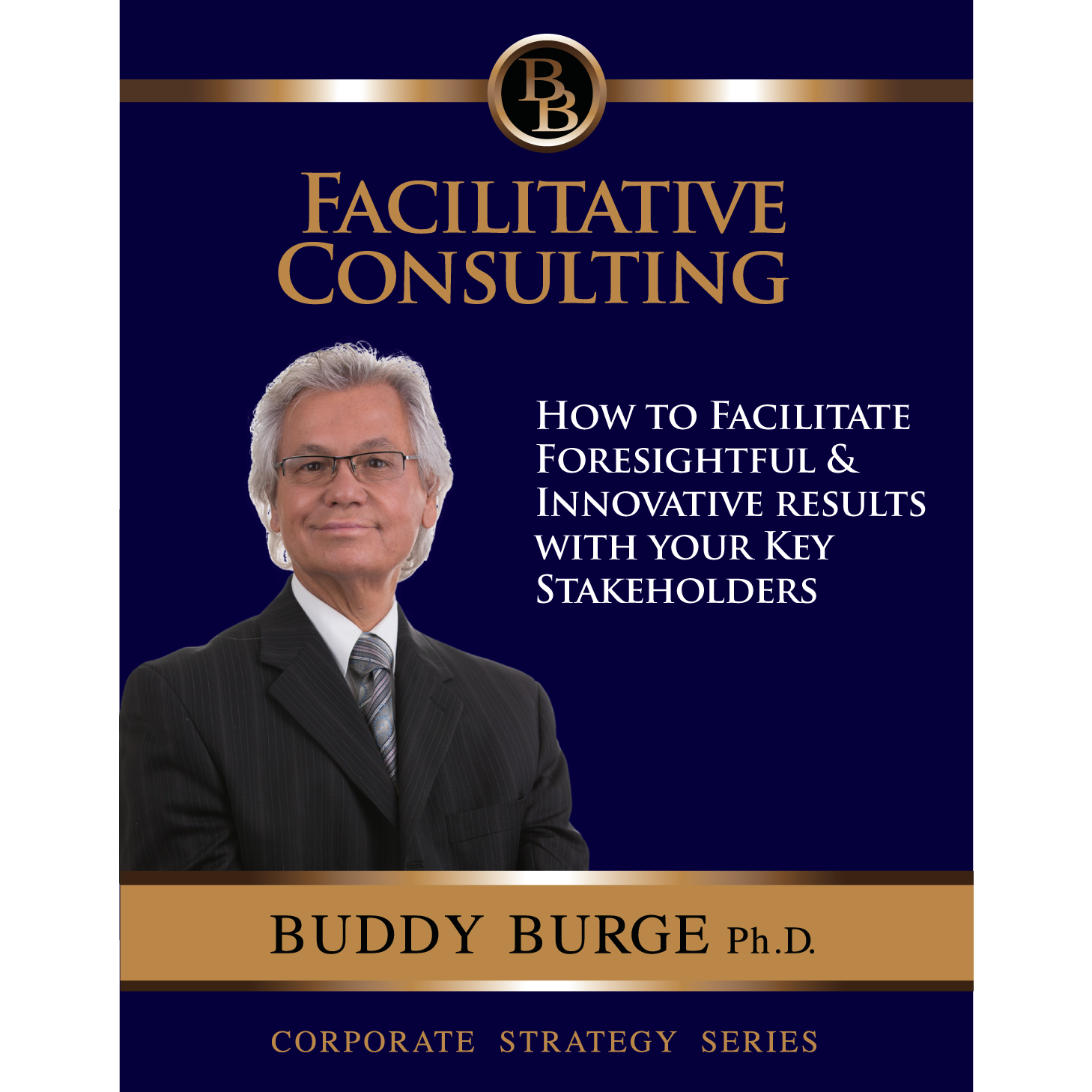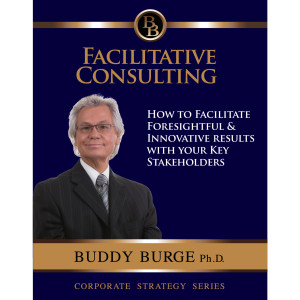
The following excerpt is taken from “Facilitative Consulting”
Facilitative Consulting Elements, Assumptions, Goals and Roles
In the first three articles on Facilitative Consulting we detailed its’ four ever present element, its’ four assumptions and the three consultant goals.
In this section we will discuss the three consultant roles.
The Three Roles Consultants Choose
Having leverage requires confronting the doubts at each stage of the consulting process, during:
- Contracting
- Data collection
- Discovery
- And while preparing for the feedback meeting.
Waiting until the implementation phase to “overcome resistance” is too late.
As you consult in a variety of situations, it helps to become aware of the role you typically assume and to be able to identify situations where this will help or hinder your performance.
Only then can you make a conscious choice among alternatives.
One discovery people often make in such self-analysis is that they begin to identify situations where they can operate more successfully in a collaborative mode.
However, the realities of most organizations are such that there will be times when the pair of hands or expert roles are more appropriate and other times when they cannot be avoided.
Role Number One: Expert Role
One way line managers typically relate to external consultants, is client to expert. We become the “expert” in the performance of a given task.
For example:
In accordance with a corporate decision, cost accounting records are changed from a manual to a computer system.
After awhile, it becomes clear that the new system has not lived up to expectations.
The computer itself is OK; the problem is somewhere in the information flow that is input to the computer.
At this point, the manager calls in the computer specialist.
After describing the difficulties, the manager says, “I have neither the time nor the inclination to deal with this problem.
You’re the expert; find out what’s wrong and fix it.
You have a free hand to examine the operation and do whatever analysis is necessary.
Keep me posted on your findings and what you intend to do.”
In this case, the computer consultant becomes, in effect, a member of the manager’s staff with delegated authority to plan and implement change programs subject to the same restrictions as other members of the manager’s staff.
The Implications of the Expert Role and Relationship
The manager elects to play an inactive role. He or she expects to hold the consultant responsible for results.
The consultant accepts the responsibility and feels free to develop and implement action plans.
The manager is expected to be responsive, to provide the assistance needed to solve the problem.
Decisions on how to proceed are made by the consultant, on the basis of his or her expert judgment.
There is no need to involve the manager in technical details.
Information needed for problem analysis is gathered by the consultant.
The consultant also decides what methods of data collection and analysis will be used.
Technical control rests with the consultant.
Disagreement is not likely because it would be difficult for the manager to challenge “expert” reasoning. I
If the manager seeks to exert control over technical decisions, the consultant will see it as unjustified interference.
Collaboration is not required.
Problem-solving efforts are based on specialized procedures.
Two-way communication is limited. The consultant initiates and the client responds. The consultant expects and is expected to initiate communication in a question-and-answer mode.
The consultant’s goal is to solve the immediate problem. Neither the manager nor the consultant expects the manager to develop skills to solve similar problems in the future.
The consultant plans and implements the main events. Or the consultant provides detailed instructions for implementation by the manager.
In effect, we have made the manager’s role to judge and evaluate after the fact.
Problems with the Expert Role
Problems that are purely technical are rare. Most problems have a “people element” in them.
And if the prevailing organizational climate is fear, insecurity, or mistrust, essential information on the people part of the problem may be withheld or distorted.
Without valid data, accurate assessment becomes impossible.
Action programs based on faulty discovery have little chance for success.
Role Number Two: Pair of Hands Role
Here the manager sees the consultant as an extra “pair-of-hands.”
The manager says in effect, “I have neither the time nor the inclination to deal with this problem.
I have examined the deficiencies and have prepared an outline of what needs to be done.
I want you to get it done as soon as possible.”
The manager retains full control.
The consultant is expected to apply specialized knowledge to implement action plans toward the achievement of goals defined by the manager.
The Implications of our Acting as a pair of Hands are:
The consultant takes a passive role. The order of the day is responding to the manager’s requests, and the consultant does not question the manager’s action plans.
Decisions on how to proceed are made by the manager. The consultant may prepare recommendations for the manager’s review and approval.
The manager selects methods for data collection and analysis. The consultant may do the actual data collection in accordance with procedures outlined by the manager.
Control rests with the manager. The consultant is expected to make suggestions, but outright disagreement is avoided as this would be seen as a challenge to the manager’s authority.
Collaboration is not really necessary. The manager feels that it is his or her responsibility to specify goals and procedures. The consultant can ask questions for clarification.
Two-way communication is limited. The manager initiates and the consultant responds. The manager initiates in a descriptive or evaluative mode.
The manager specifies change procedures for the consultant to implement. The manager’s role is to judge and evaluate from a close distance.
The consultant’s goal is to make the system more effective by the application of specialized knowledge.
The Problem with the Pair of Hands Role
In a pair of hands mode, the consultant is dependent on the manager’s ability to understand what is happening and to develop an effective action plan.
If the manager’s assessment is faulty, the action plan won’t work.
The consultant who provided the “service” becomes a convenient scapegoat.
To avoid the big trap, the consultant may ask for time to verify the manager’s assessment.
And then the consultant may face other problems, managers who have a preference for consultants who take on the pair-of-hands role may interpret such requests as questioning their experience, their authority, or both.
Role Number Three: Collaborative Role
The consultant who assumes a collaborative role enters the relationship with the notion that management issues can be dealt with effectively only by joining his or her specialized knowledge with the manager’s knowledge of the organization.
Problem solving becomes a joint undertaking, with equal attention to both the technical issues and the human interactions involved in dealing with the technical issues.
With this role, consultants don’t solve problems for the manager.
They apply their special skills to help managers solve problems.
The distinction is significant.
The key assumption underlying the collaborative role is that the manager must be actively involved in data gathering and analysis, in setting goals and developing action plans, and, finally, in sharing responsibility for success or failure.
Here’s What Happens in a Collaborative Role
The consultant and the manager work to become interdependent. They share responsibility for action planning, implementation, and results. Decision making is bilateral. It is characterized by mutual exchange and respect for the responsibilities and expertise of both parties.
Data collection and analysis are joint efforts. The selection of the kind of data to be collected and the method to be used is done by both the consultant and the manager.
Control issues become matters for discussion and negotiation. Disagreement is expected and seen as a source of new ideas.
Collaboration is considered essential. The consultant makes a special point to reach understanding and agreement on the nature and scope of mutual expectations prior to initiating problem-solving efforts.
Communication is two-way. Both the consultant and the manager take the initiative, depending on the issues. Information exchange is carried on in a problem-solving mode.
Implementation responsibilities are determined by discussion and agreement. Assignments are made to maximize use of available resources in line with responsibilities appropriate to each party.
The consultant’s goal is to solve problems so they stay solved.
That is, the consultant establishes a helping relationship designed to broaden the competence level of
Managers to develop and implement action plans that will make the system more effective.
Next time the manager will have the skills to solve the problem.
Problems with the Collaborative Role
There are also problems in trying to work collaboratively.
Consultants often have special skills (e.g., in budget management) that managers see as a quick answer to their problems.
Managers who prefer to work with consultants in an expert role may interpret any attempts at collaboration as indifference or foot dragging.
Managers with a preference to work with consultants in a pair of hands role may interpret moves toward collaboration as insubordination.
The Core Transaction of any Consulting Contract
The core transaction of any consulting contract is the transfer of expertise from the consultant to the client.
This holds whether the expertise is very tangible, such as skill in furnace design or computer programming, or whether the expertise is very intangible, such as problem-solving or team-building skill.
Whatever the expertise, it is the basis for the consultant’s being in business.
It is easy to think “I have forgotten more about managing inventories than most of my clients will ever know.”
They can hardly spell the word, and I am the corporate guru!
How can I be collaborative under those conditions?”
The confusion is between collaborating on the technical aspects of the problem (which I don’t mean) and collaborating on how the stages of the consultation will be carried out (which I do mean).
To review these four articles on consulting, in the first two articles on Facilitative Consulting we detailed its’ four ever present element and its’ four assumptions
In post number three, we described the three consultant goals.
In this last article on being a consultant, we assessed the three roles of a consultant.
I wish you good luck and every success in your endeavors.
For more on this topic, we recommend the following | |
 | Facilitative ConsultingHow to Facilitate Foresightful and Innovative Click Here For Video and Full Description If you found this article useful |

![CropperCapture[387]](http://buddyburge.com/wp-content/uploads/2014/02/CropperCapture387-300x272.png)
![CropperCapture[388]](http://buddyburge.com/wp-content/uploads/2014/02/CropperCapture388-300x129.png)
![CropperCapture[389]](http://buddyburge.com/wp-content/uploads/2014/02/CropperCapture389-300x207.png)
![CropperCapture[390]](http://buddyburge.com/wp-content/uploads/2014/02/CropperCapture390-300x209.png)
![CropperCapture[391]](http://buddyburge.com/wp-content/uploads/2014/02/CropperCapture391-300x208.png)
![CropperCapture[392]](http://buddyburge.com/wp-content/uploads/2014/02/CropperCapture392-300x298.png)
![CropperCapture[393]](http://buddyburge.com/wp-content/uploads/2014/02/CropperCapture393-300x220.png)
![CropperCapture[394]](http://buddyburge.com/wp-content/uploads/2014/02/CropperCapture394-300x192.png)
![CropperCapture[395]](http://buddyburge.com/wp-content/uploads/2014/02/CropperCapture395-300x197.png)
